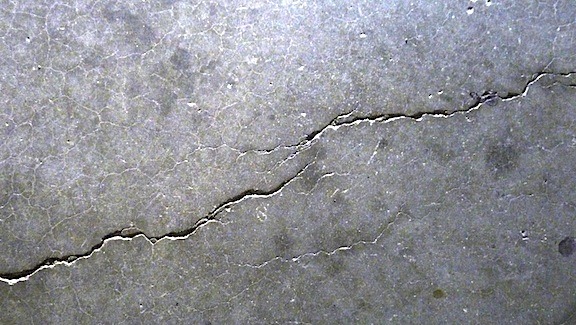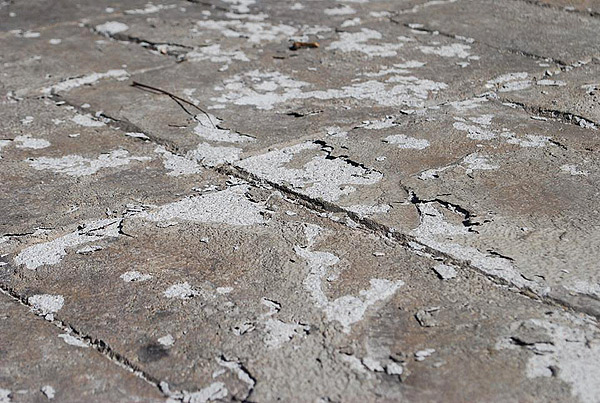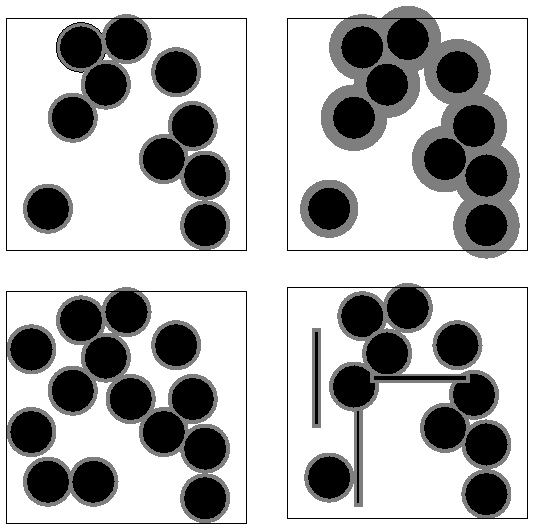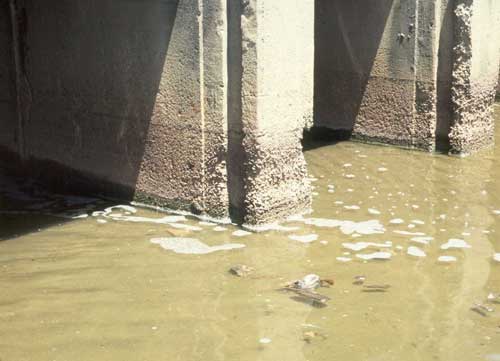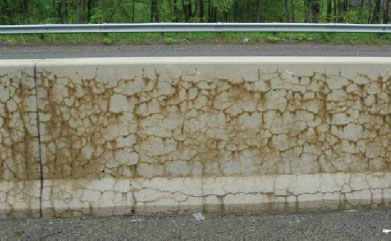Durability of concrete is defined as the resistance of concrete against abrasion and deterioration. It means that how much damage a concrete member of structure can safely endure in its service life. Durability of concrete is governed and affected by many reasons such as physical environmental conditions like temperature variation, humidity, wind action as well as chemical reactions between concrete and different external substances. Therefore, to classify factors deciding durability of concrete, two main types are introduced:
- Physical durability of concrete
- Chemical durability of concrete
Table of Contents
Factors Affecting Physical Durability
1)Rain and Humidity
Rain and humidity can cause physical damage to concrete members. Strong winds and heavy rains can cause abrasion at the outer surface. From these abrasions and micro-cracks, water can easily enter and cause weathering.
Repetitive weathering will result in washing away of concrete particles first then followed by big chunks which not only hollows out the member but also decrease its strength drastically.
To make concrete durable against rain and humidity, frequent inspections should be made to seal away any external cracks to prevent moisture entrapment from rain and humidity.
Cracks should be first cleaned from dust, weeds, roots and rots and then sealed using grout or some chemical admixture. An additional layer of weather resistant chemicals can also be applied on top surface to provide extra protection.
2)Temperature stresses (Expansion & Shrinkage)
Proper curing method and time is crucial for concrete. If fresh concrete is not properly cured or exposed to high temperature, then it results in high heat of hydration which originates thermal cracks throughout the concrete structure.
Also, in very hot regions of the world, rise in temperature gives way to increase in internal temperature stresses which leads to expansion of concrete and upon cooling down it shrinks back. If not properly designed, these expansions and shrinkage can become a source of excessive damage to concrete.
To combat these thermal stresses, concrete should be cured properly. In hot climate, cement with low heat of hydration should be used for concrete mix. Additionally, water sealants can be applied on the surface to prevent escape of water from surface.
Provision of expansion and contraction joints accommodate thermal stresses by allowing them space to expand and contract. All such steps help increase strength and durability of concrete.
Fig (1): Thermal cracks in concrete
3)Freezing and thawing
Resistance to freezing and thawing is important for durability of concrete. In colder climate regions, where temperature drops below zero, freeze- thaw cycles can cause excessive damage to concrete structure. Water expands its volume by 9% upon freezing to ice and exerts hydraulic pressure from inside which results in the propagation of cracks.
When temperature rises, ice turns into water and the hydraulic pressure drops which causes stress relief. This continuous cycle of freezing and thawing worsens the cracks and eventually causes significant decrease in strength carrying capacity of the member.
Fig (2): Deterioration caused by freeze-thaw cycles
For resistance against freeze-thaw deterioration, air entrapped concrete may be used. In such type of concrete, air bubbles are introduced into the concrete. These air bubbles provide relief against hydraulic pressure which builds up when ice freezes and increases its volume, hence, preventing excessive damage and allowing it to function properly in its design life.
4)Abrasion
Physical durability of concrete includes resistance to abrasion caused by repetitive loading cycles, high stresses. Abrasion can be caused by moving loads such as vehicular loads on the roads, splashing waves on the piers of bridges, snow loads etc. To make concrete durable against abrasion, it should be made
Fig (3): Abrasion of concrete surface
5)Percolation & permeability
Durability of concrete is significantly affected by the quality of its constituents and the process adopted for its production and casting.
Therefore, if a concrete mix is designed using high quality cement and aggregates having sound mechanical properties, adopting correct water-cement ratio and properly pouring, compacting and curing the concrete, then resultant concrete will also be sound offering great durability in its design life.
But if any of these steps are incomplete or not correctly implemented according to provided code guidelines, then the cast concrete will be problematic. And one of those problems is permeability of concrete.
Permeability of concrete means concrete having pore like structure that allows water to percolate and cause cracks to generate from the inside. These cracks first start as hairline thickness but soon converge to form large cracks causing serious damage to the integrity of the concrete. These cracks also cause water required for hydration of cement to escape, hence preventing the concrete to gain its full strength.
To prevent the permeability of concrete, well graded aggregate should be used. Flaky and elongated particles should be avoided to achieve dense concrete mix.
Concrete mix should be compacted adequately to remove all entrapped air and also prevent segregation. Also, curing of concrete should be done properly to safeguard against cracks generated from heat of hydration. Only by taking all above cautions into consideration, a durable concrete is achieved.
Factors Affecting Chemical Durability
1) Sulphate attack
Concrete foundations constructed in soil or water having high content of sulphate are prone to excessive disintegration. Calcium sulphate, sodium sulphate and magnesium sulphate react with hardened concrete and cause its decay by inducing significant pressure.
This pressure surge can result in widespread cracks all across the concrete body reducing the overall strength considerably. Sulphate attack causes whitish appearance on the surface due to deposition of salts.
Fig (4): Salts deposited on concrete due to sulphate attacks
The best way to enhance concrete durability against sulphate attack is to properly design it using sulphate resistant cement. Sulphate resistant cement decreases the activity of sulphate attack by multitude preventing erosion of concrete members. Furthermore, use of pozzolanic ash and steam curing can also prepare a sulphate resistant concrete mix.
2)Salt Exposure
Concrete members constructed in water bodies having high concentration of salts of chloride, nitrate etc. need to be resistant against salt erosion. Salts of chlorides such as sodium and potassium chloride can penetrate the surface of high permeable concrete and react with steel reinforcement causing it to erode.
Therefore, for concrete members such as piers of bridges should be made of low permeable concrete to prevent salts from rusting of steel reinforcement. Also, water repellent admixtures can be used to coat the surface of concrete. Such layer will act as a water impermeable barrier, hence, preventing salts to enter the concrete structure increasing overall durability of structure.
3)Carbonation
Carbonation is another important aspect to consider for chemical durability of concrete. The moisture present in the concrete reacts with the carbon dioxide present in the atmosphere with results in the increasing the pH value of the concrete. This high pH environment causes the corrosion of steel reinforcement present inside the concrete.
With corrosion of steel bars, the flexural strength of concrete reduces severely and may end up reducing the service life of member by several years.
Fig (5): Steel corrosion due carbonation
To increase resistance against carbonation, concrete cover of structural members is increased especially for those members which are to be built in areas with carbon dioxide concentration such as parking lots. Moreover, corrosion resistant admixtures and surface treatments can be applied to protect steel reinforcement from decay during their design life.
4)Alkali-Silica Reaction
Aggregates are generally non-reactive but certain aggregates containing silica are susceptible to alkali attacks. Sodium and potassium oxides present within cement react with silica of aggregate and cause swelling. This significant expansion causes excessive cracking originating from the inside of concrete due to extreme built-up of pressure, henceforth, resulting in massive damage to concrete.
To prevent alkali-silica reaction, aggregates should be selected carefully and opting other cementitious materials such as slag or fly ash instead of cement, increasing overall durability of concrete.
Fig (6): Cracks due to swelling caused by alkali-silica reaction


